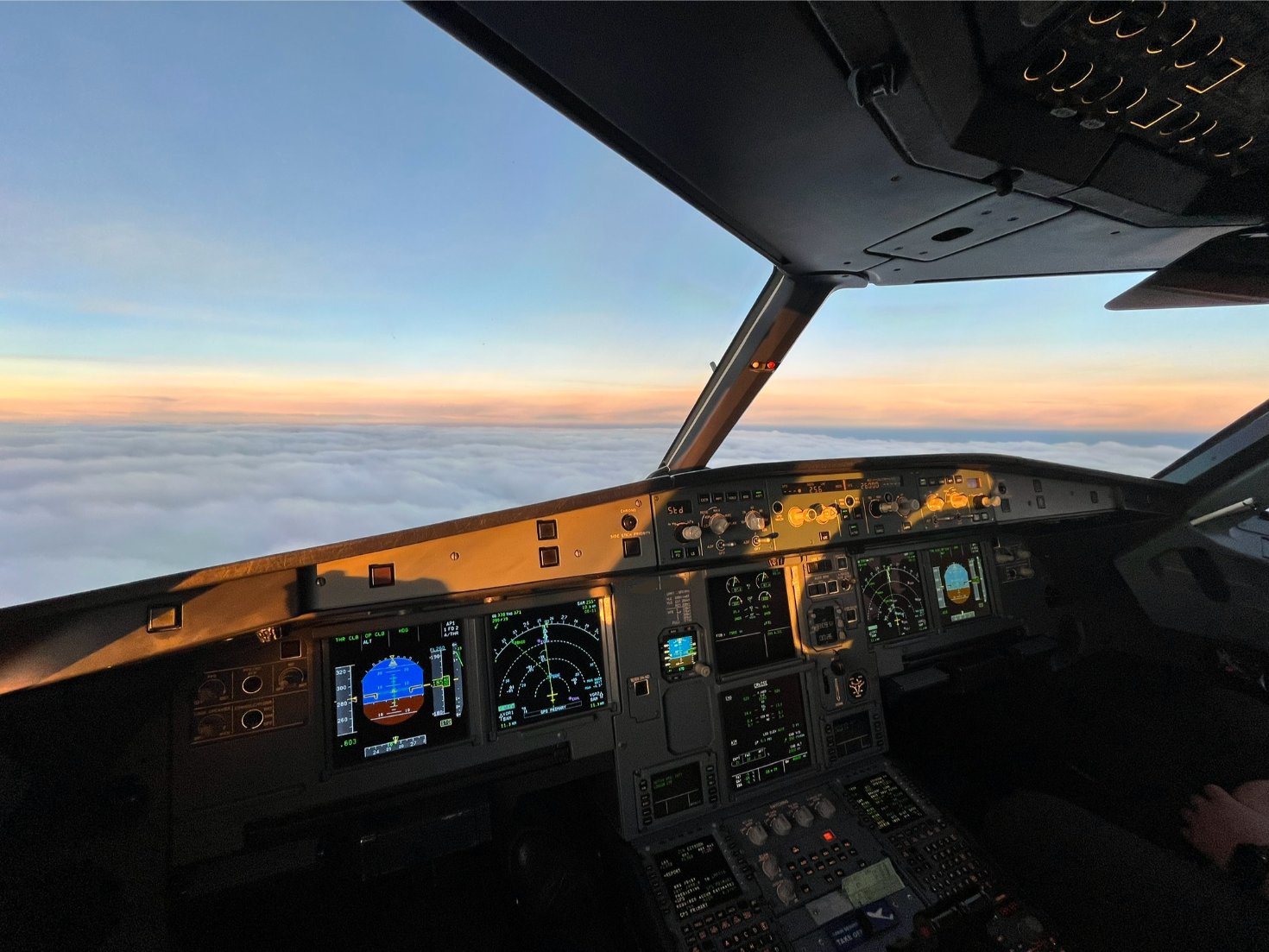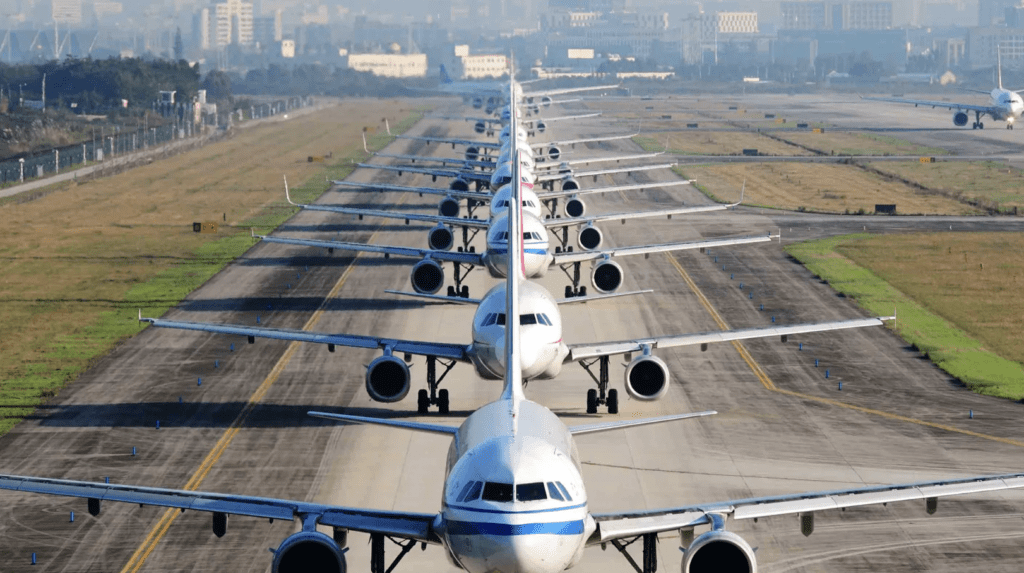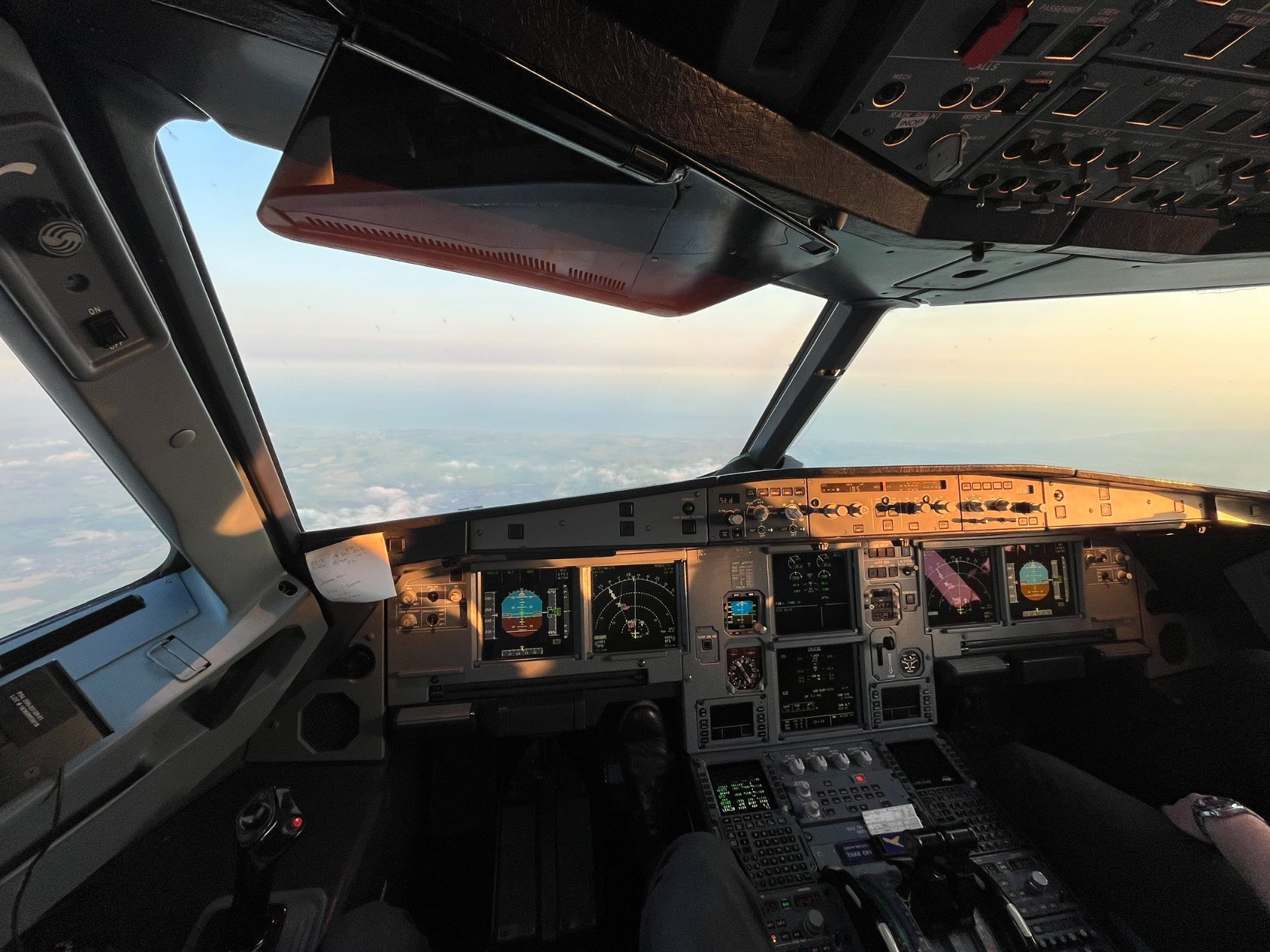
Airport Closure & Failure Management
A day filled with decisions, delays and expectation management. Another insight into what the daily life of an airline captain really consists of…
Share Post
It’s a word nobody likes to hear….it tends to be preceded with other words like ‘unfortunately’ and ‘sorry’. But what actually are slots? And why can passengers spend upto 3 hours sat on a plane waiting for their slot instead of being able to stay in the terminal?

Slots are take-off times, given to each aircraft, and calculated by whichever body is regulating the airspace you’re flying in. In Europe – this is ‘Eurocontrol’. It’s a way of regulating how many aircraft and up in each bit of airspace at any one time, which ensures controllers are not overloaded. It also ensures airports are not overloaded with too many aircraft on the ground and nowhere to park.
Planes have their planned departure time which is decided months or years in advance, and all being well, this will also be it’s slot time. However, in the world of aviation, all is often not plain sailing!
There are many reasons that an aircraft can be given a slot later than it’s planned one, however the slots tend to be generated by two sources;
For both of these sources, the most common reasons for giving aircraft slots are
a) Airport Capacity
b) Air Traffic Control Staffing Levels
c) Weather
Airport capacity is exactly what it says on the tin. Only X amount of aircraft can land or takeoff per hour at one airport. If there’s been a delay at the airport (due to weather, a tech issue, or a variety of other causes) this can have a huge knock on effect and leave lots of planes then all wanting to land and takeoff at the same time. Planes that are due to takeoff will be given a delaying slot before they can push back, to save them sitting by the runway for hours burning fuel. Planes that are due to land can be put into the airborne hold to slow the flow rate. Planes that are due to land but still further away from the airport can be slowed down (they’ll literally be asked to slow down to their slowest speed). Planes that are due to land, but haven’t yet left the departure airport, can be given slots restricting their departure time, to save them slowing down or holding in the air.
If ATC Staffing levels are low (someone calls sick, or they’re on strike….*cough FRENCH cough*) then for safety reasons, there needs to be a way of limiting how many aircraft each controller can have in their ‘sector’ at one time. The job of a controller is an intense one and if they’re overloaded, they’re more likely to make errors, or not notice things that are about to go very wrong.
Weather is always keeping us on our toes in the aviation industry. When bad weather is impacting a certain ATC sector en route, planes will all be flying around the weather which massively adds to the workload of the controller in that sector. They may also be spilling out into surrounding sectors if dodging the storms necessitate it, so it adds to the surrounding controllers workload too, which also leaves less room in the sky for planes to pass eachother as the area effected by weather is unusable. ATC will then issue slots to aircraft that haven’t taken off, to control the flow rate and make sure they’re not going to get a huge influx of aircraft trying to squeeze into the now smaller sized airspace sector they control.
It’s the same story if there’s weather at either your departure or arrival airport. Planes will be dodging weather, aborting landings and maybe delaying takeoffs too due to the bad weather. This all has a knock on effect and once again means ATC may issue slots to make sure the airborne holds don’t get overloaded, as well as the runway hold point.

Once, and only once all passengers are on board and the jet bridge has been removed, pilots can send a ‘ready message’ to ATC. This lets them know that we are ready to move and means that if any aircraft infront of us miss their slots, or there are slot improvements available, they’ll be able to offer them to us. As is often the case, the slot can drastically come forwards and suddenly be in 10 minutes time. When you’re given a slot by ATC, you must depart in the window 5 minutes before the slot, to 10 minutes after. If you are not at the runway holding point ready to go and it’s approaching 10 minutes after your slot, you will be reassigned a new slot and this can be for multiple hours time.
It’s not uncommon for aircraft to ‘miss’ a slot due to slow boarding or other factors, and then be re-allocated one for several hours in the future!
If you let all the passengers roam in the terminal during your 3 hours slot delay, you can’t put a ready message in and you’re absolutely guaranteed to be waiting that full 3 hours. If you get them on the plane, at least you stand much more change of cutting time off the delay with a slot improvement.
If you’re a pro-active airline pilot, you can get straight on the phone to your flight planning team to ask for re-routing options if the slot is due to en route airspace restrictions. In most airlines, these teams will already be looking at these options anyway but it can sometimes help to have a pilots input (or so we like to think anyway :)).
On many occasions I’ve managed to get a slot removed by phoning up and requesting to re-route round an area of airspace. Whilst it can sometimes add a few more minutes onto your flight-time, it could save a few hours sat on the ground waiting, and keep the airlines schedule running smoothly.
Other than that, it’s more about managing customers during the delay. I tend to open up the flightdeck for visitors which seems to always change the atmosphere onboard. I’m yet to have a flight where no passengers have wanted to come and explore the flightdeck during a delay, and ore often than not, the queue goes halfway down the aircraft immediately after making the announcement. Keeping the passengers well informed and giving them a full explanation as to what the slot means, and regular updates on whether there’s been any improvement or not, can be really important.
Honestly, just be as respectful and mindful of the crew & other passengers as possible. It’s hard during times like this, but making an effort to be understanding and polite can really help. Know that the crew are doing what they can, and we’re all in this together!
Also please be aware as a passenger you are able to claim money if your flight is delayed over a certain amount. See my post here for more details on what & how to claim!
Overall slots are short term pain for long term gain….Whilst it can be frustrating waiting for a slot that you have no control over, know that it is all in the name of safety. Your safety and everyone on board your aircraft. It’s also worth noting that although the pilots & crew may put on a professional face….they are just as frustrated as you are with the slot. Any delay means longer at work (which is usually unpaid), later home time, and less rest between their next flight.
Eurocontrols own explanation of slots


A day filled with decisions, delays and expectation management. Another insight into what the daily life of an airline captain really consists of…

It’s a Sunday morning and I’m jolted awake by the piercing sound of my phone ringing at 5am for what is going to be (unbeknown to me at this point) a whopping 16+ hour duty day…
Copyright © 2024 Pilot Bible